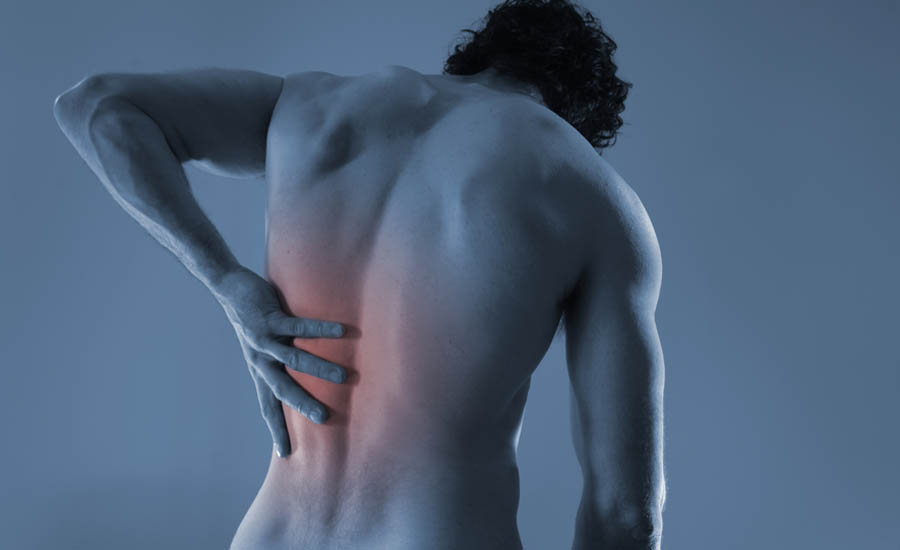In October 2017, the NIOSH Musculoskeletal Health Cross-Sector Program published the first blog post in a series to highlight musculoskeletal health research at NIOSH. This post—the fifth installment in the series—will discuss how best to promote musculoskeletal health and reduce the incidence of musculoskeletal disorders (MSDs) among surface stone, sand, and gravel mine workers.
As of 2015, 80% of active surface mining operations were extracting stone, sand, and gravel. A majority of job-related tasks in surface mining require workers to maintain awkward postures, perform repetitive movements, and operate vibrating machinery. Surface mine workers often develop musculoskeletal injuries in the back, fingers, knees, and shoulders1. According to the NIOSH Mining Program, 39% of nonfatal lost-time injuries between 2011 and 2015 involved handling materials, with sprains and strains being the most frequently reported injury2. Handling materials during loading and unloading or machine maintenance and repair is a frequent cause of musculoskeletal disorders among surface mine workers in minerals processing plants4. In many cases, the contributing factors for MSDs in stone, sand, and gravel operations are largely preventable through workplace design, usage of correct tools, proper housekeeping, and equipment modifications. NIOSH has conducted research and developed tools to help mine workers identify and remediate risk factors. Examples of some of that research follows.
NIOSH Resources (chronologically listed by publication date)
Mining Publication: Simple Solutions for Surface Mine Workers This booklet provides examples of solutions and task design ideas you can use to reduce risks for MSDs and slips, trips, and falls.
Mining Product: ErgoMine ErgoMine is an ergonomics audit tool designed specifically for mining. It includes audits for bagging, haul truck, and maintenance and repair operations at surface mining and processing facilities.
Ergonomics Processes: Implementation Guide and Tools for the Mining Industry This document helps mining companies establish ergonomics processes and programs at their mine site. It includes training for management and miners, as well as implementation tools that can be used to prioritize tasks for redesign, survey mine workers for current musculoskeletal discomfort, and determine the impact of improvements through before-and-after comparisons.
Mining Product: Ergonomics and Risk Factor Awareness Training for Miners The training is designed specifically for the mining industry to increase miners’ awareness of risk factors and encourage miners to take action to report and reduce their exposures to risk factors. It includes everything needed to provide ergonomics training at a mine site.
Recent Research Initiatives
The NIOSH Mining Program’s recent and current research is focused on providing tools to help miners identify risk factors and implement ergonomics interventions. Products designed to prevent MSDs in mining include user-friendly software and a wide variety of training resources.3 One research product aims to evaluate the appropriateness of using a mobile app to determine mobile equipment operators’ whole-body vibration exposure. By looking at publicly available MSD data and conducting mine site visits, NIOSH researchers and other occupational health professionals strive not only to reduce MSDs but to better understand human-machine interactions amidst the changing nature of mining work environments.
Add a comment below about how you have used NIOSH musculoskeletal health research to promote health and safety in the field of mining. Have a question or other comment? We’d love to hear it.
Missed the first four blog installments in the Musculoskeletal Health Research at NIOSH series? Read them here:
- Blog Series to Highlight Musculoskeletal Health Research at NIOSH
- Musculoskeletal Health Research to Benefit Temporary Retail Workers
- Musculoskeletal Health Research to Benefit Couriers, Messengers, and Baggage Handlers
- Musculoskeletal Health Research to Benefit Construction Workers
References
- National Institute for Workplace Safety and Health. Mining: Mining Facts- 2015. Updated August 8, 2017.
- National Institute for Workplace Safety and Health. Mining: Data & Statistics. Updated May 22, 2017.
- National Institute for Workplace Safety and Health. Mining Program. Updated June 2, 2017.
- NIOSH. Mining: Identification of Work-Related Musculoskeletal Disorders. Updated June 12, 2016.

